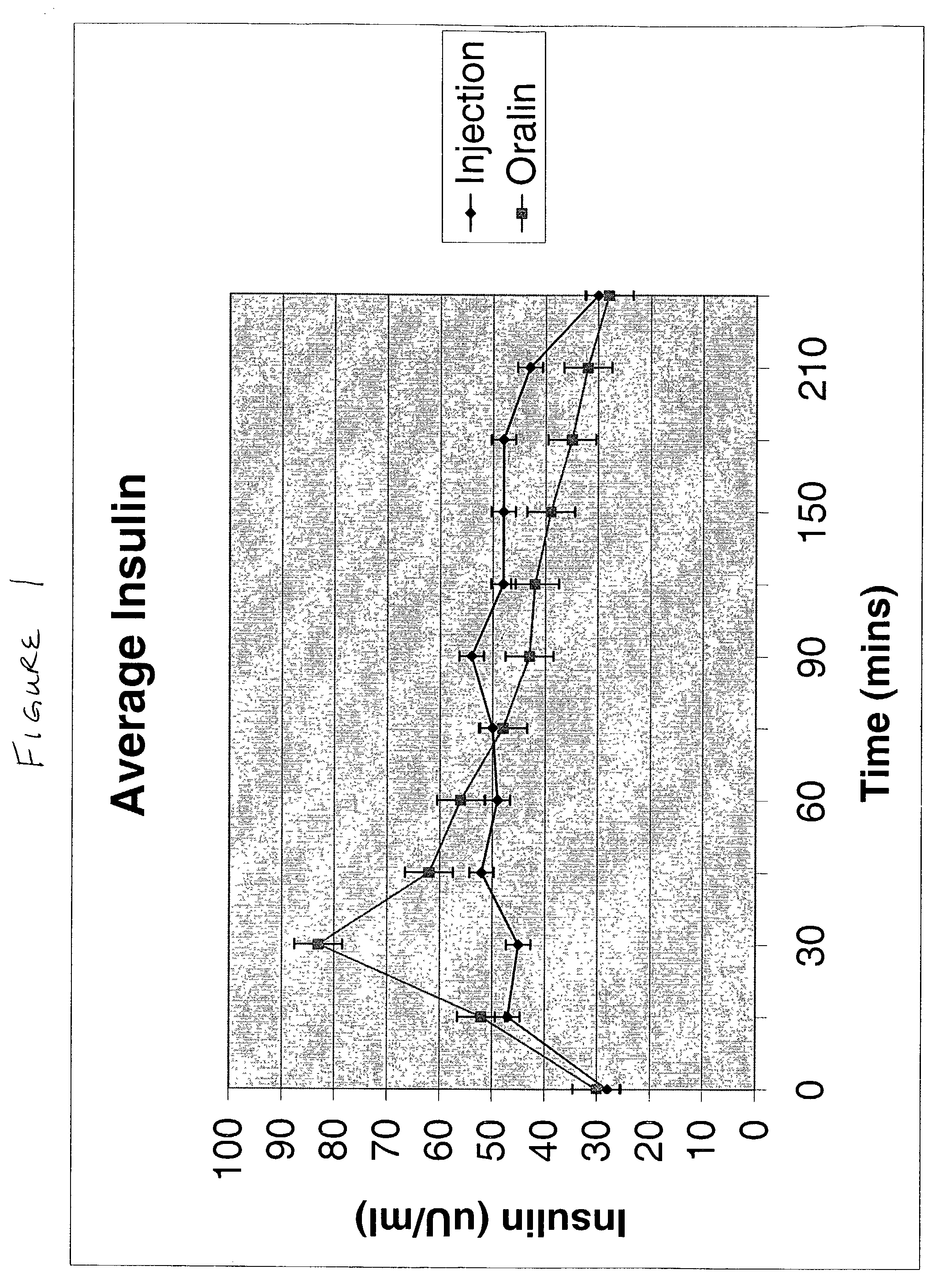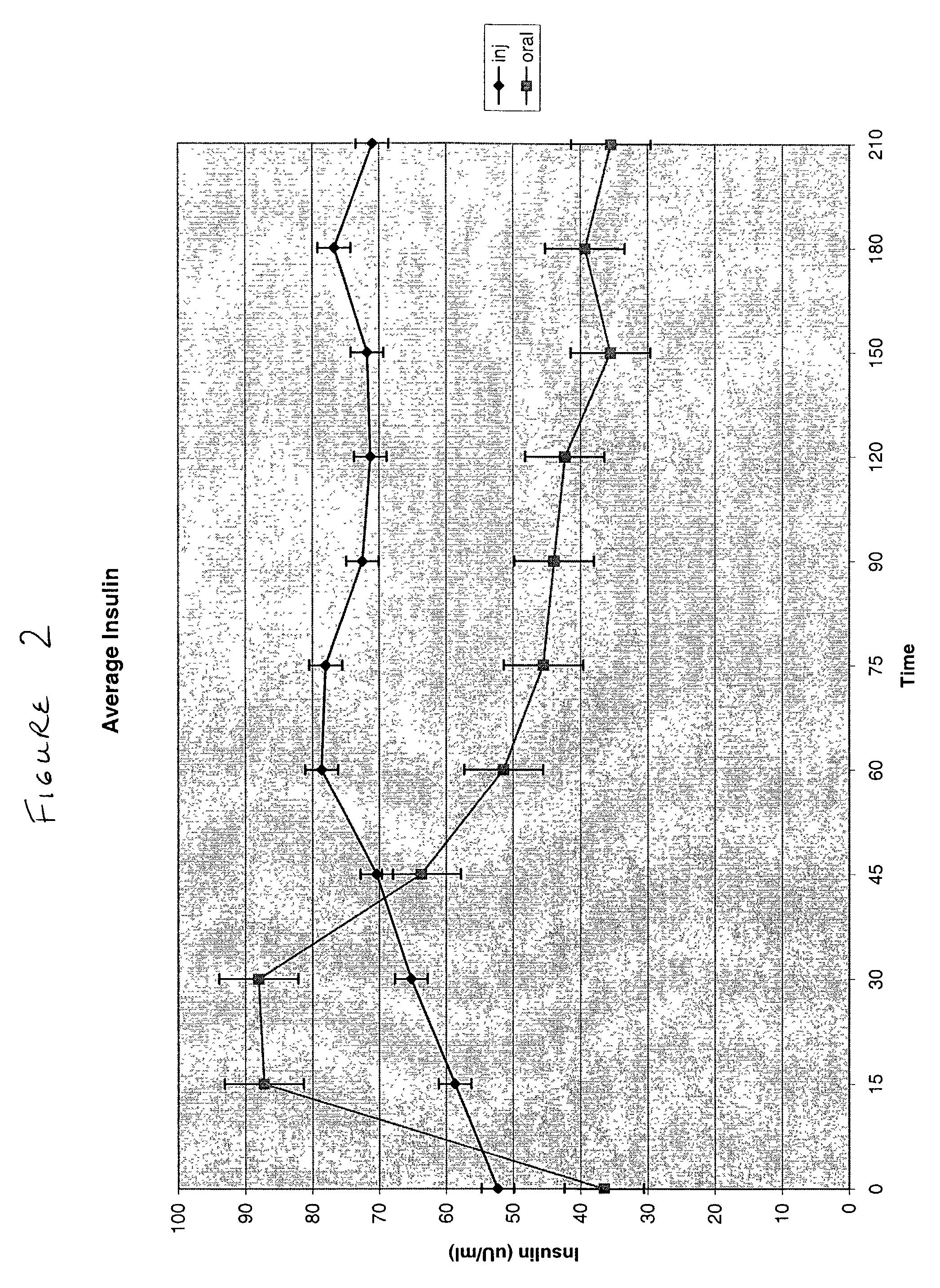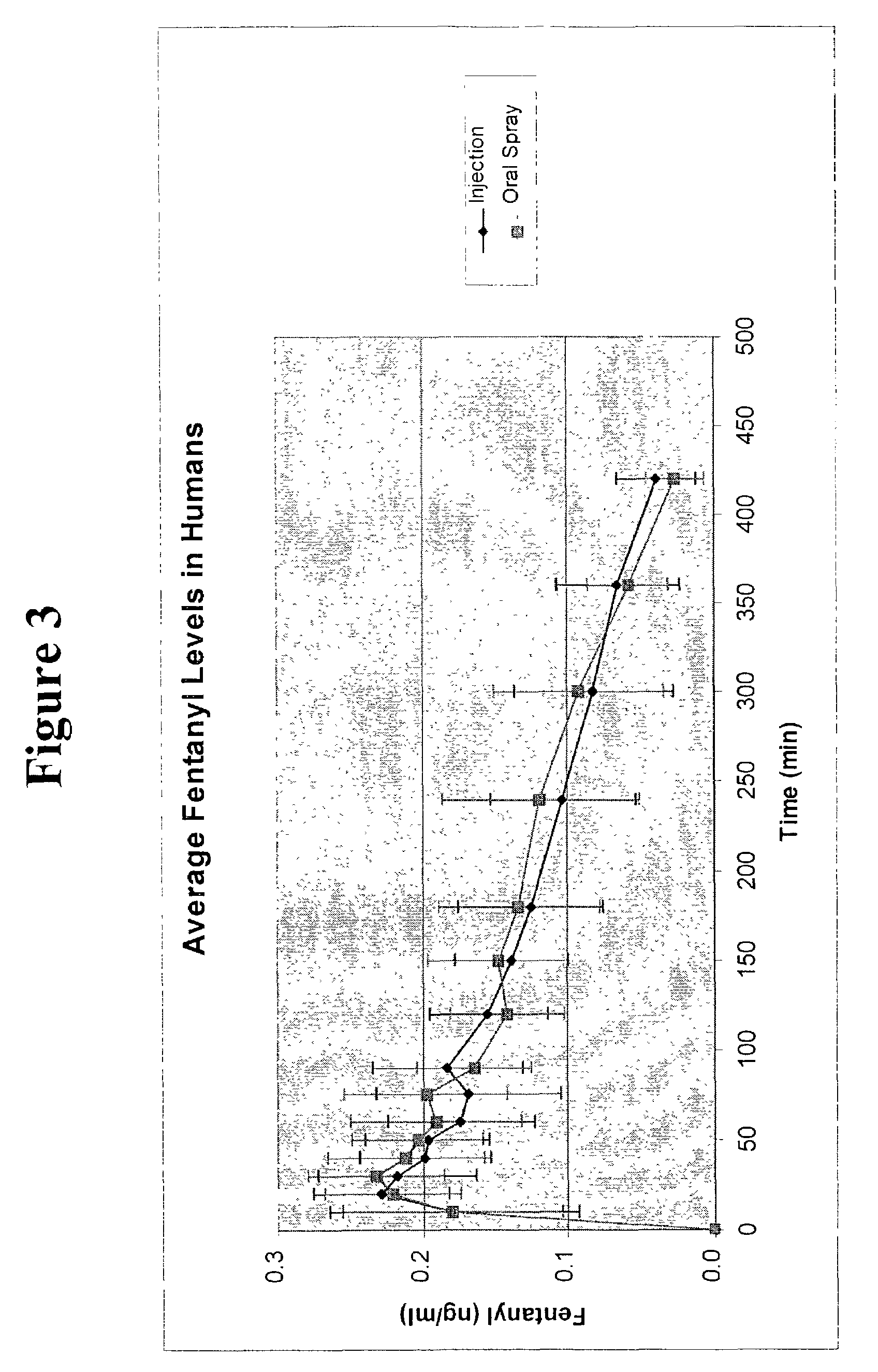Methods of administering and enhancing absorption of pharmaceutical agents
a technology of pharmaceutical agents and absorption rates, applied in the field of improving the composition of pharmaceuticals, can solve the problems of poor intrinsic permeability poor absorption rate, etc., and achieve the effect of enhancing the absorption rate of a macromolecular pharmaceutical agent and increasing the bioavailability of active drugs
- Summary
- Abstract
- Description
- Claims
- Application Information
AI Technical Summary
Benefits of technology
Problems solved by technology
Method used
Image
Examples
example 1
[0081]About 100 mg of powdered insulin were placed in a glass beaker equipped with a stirrer. Ten ml of distilled water were added and the solution was stirred at low speed. To this solution was added 5M HCl (pH 2) solution dropwise until the insulin was solubilized completely. This solution was then neutralized, while stirring slowly, with 5M NaOH solution dropwise until the pH was between about 7 and 8. To this solution was added 50 mg sodium lauryl sulfate, 36 mg deoxycholate, 50 mg trihydroxy oxocholanyl glycine (sodium glycocholate) and 20 mg dibasic Na phosphate; the compounds were dissolved completely. 250 mg glycerin were then added while stirring at high speed, i.e. 2000 rpm. The solution was stirred for 30 minutes and then stored at 10° C. To this mixture 40 mg m-cresol and 40 mg phenol were added. Chenodeoxycholate or polyoxyethylene ethers can be used in place of the deoxycholate.
[0082]The solution was pipetted (1 ml / vial) into 10 ml capacity glass vials. The vials were ...
example 2
[0087]An insulin solution was prepared as described in Example 1. To this solution was added 7 mg sodium lauryl sulfate, 7 mg polyoxyethylene ether (10 lauryl) and 7 mg trihydroxy oxo cholanyl glycine and dissolved completely. Seven mg lecithin, solubilized in a water alcohol solution (7 mg / mL) were then added while stirring at high speed, i.e. 2000 rpm. The solution was stirred for 30 minutes and then stored at 10° C. The resulting mixed micellar solution had about 200 units insulin. To this mixture 5 mg phenol, 5 mg m-cresol and 10 mg glycerin were added.
[0088]The solution was pipetted (1 mL / vial) into 10 mL capacity glass vials. The vials were then charged with HFA-134a propellant with a Pamasol 2008 automatic gas filling apparatus. The amount of propellant was adjusted to 9 mL shot size in order to deliver 2 units insulin per actuation of the aerosol vial. The valves of the vials were designed to deliver 100 μL spray per actuation, containing 2 units insulin. The formulation in ...
example 3
[0104]An insulin solution was prepared as described in Example 1. To this solution was added 30.4 mg sodium lauryl sulfate per ml of insulin solution, 30.4 mg polidocanol 9 lauryl ether per ml of insulin solution and 10.0 mg polylysine per ml of insulin solution, and the compounds dissolved completely. 15.2 mg triolein per ml of insulin solution was then added while stirring at high speed, i.e. 2000 rpm. The solution was stirred for 30 minutes and then stored at 10° C. The resulting solution was a mixed micellar solution. To this mixture 15.2 mg m-cresol per ml of insulin solution were added.
[0105]The solution was pipetted (1 mL) into glass vials. The vials were then charged with 10.8 g HFA 134a propellant per vial, with a Pamasol® 2008 automatic gas filling apparatus. The valves of the vials were designed to deliver 100 μL spray per actuation, containing 6 units insulin. The formulation in the glass vial including the propellant, was in a single phase, i.e. was homogeneous.
[0106]Te...
PUM
| Property | Measurement | Unit |
|---|---|---|
| molecular weights | aaaaa | aaaaa |
| molecular weight | aaaaa | aaaaa |
| molecular weight | aaaaa | aaaaa |
Abstract
Description
Claims
Application Information
 Login to View More
Login to View More - R&D
- Intellectual Property
- Life Sciences
- Materials
- Tech Scout
- Unparalleled Data Quality
- Higher Quality Content
- 60% Fewer Hallucinations
Browse by: Latest US Patents, China's latest patents, Technical Efficacy Thesaurus, Application Domain, Technology Topic, Popular Technical Reports.
© 2025 PatSnap. All rights reserved.Legal|Privacy policy|Modern Slavery Act Transparency Statement|Sitemap|About US| Contact US: help@patsnap.com



